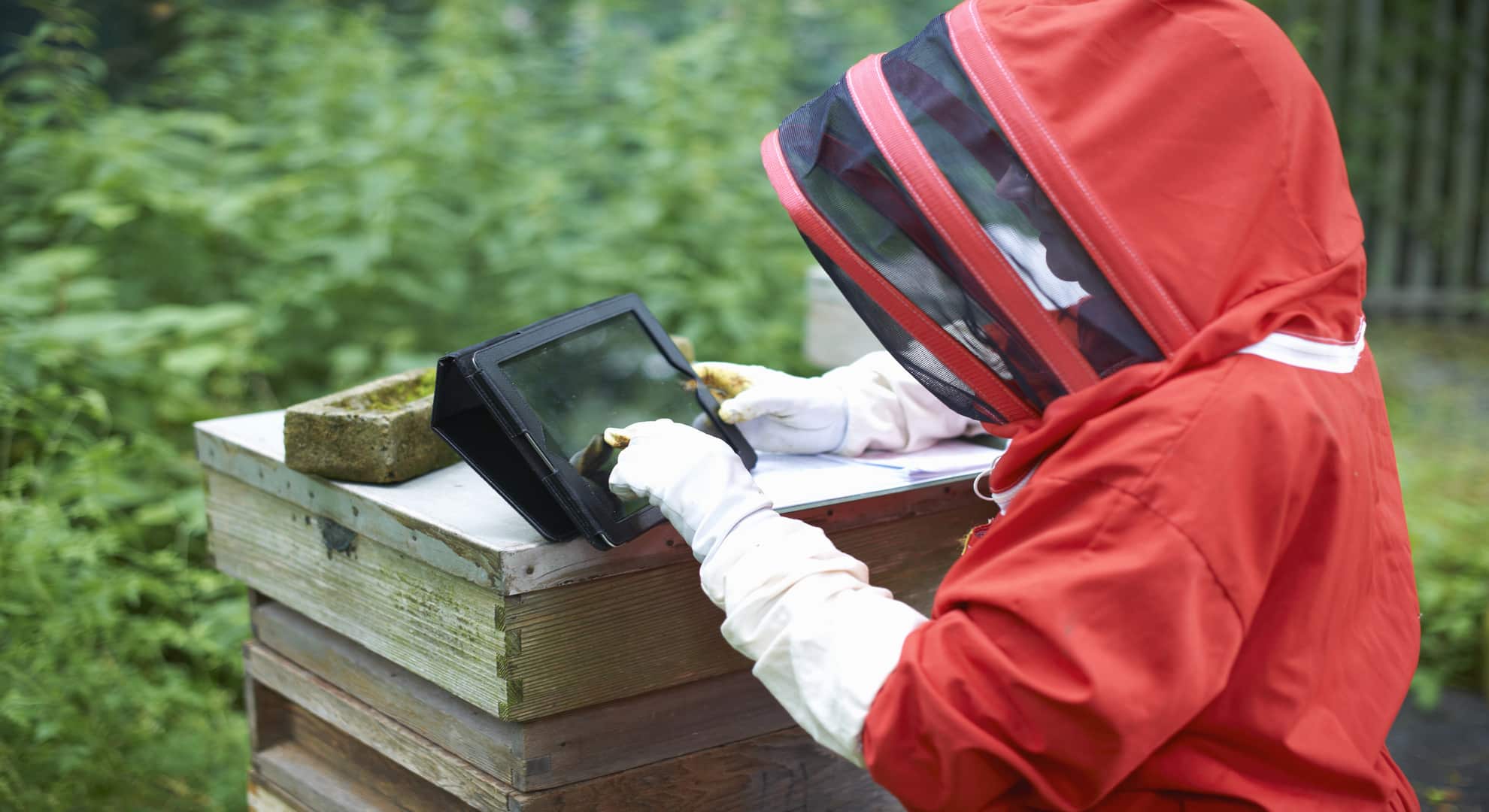
30 Jan Beekeeping needs digitalisation, too!
Applying technology within the agri-food industry could prove vital to its survival. On the one hand, to improve its productivity and modernise its processes and, on the other hand, because the effects of many activities within this important economic area cross into so many other sectors. If one fails to survive, others could easily follow… Beekeeping is a clear example and digitalising the industry represents a real opportunity to help it overcome a range of difficulties that threaten its very existence.
Bees are in danger – something the experts have been warning us about for years now. This is mainly due to use of agrochemicals, the transmission of pests and a sharp decline in their numbers. Some sub-species are even on the verge of extinction altogether. Nevertheless, the pollination work bees carry out is crucial to maintaining a balance in biodiversity and securing our food chain: 75% of the food we consume depends on pollination. With 37% of Europe’s bee population at risk, digitalisation projects like the Global Bee Project (GBP) could have a massive impact.
Global Bee Project. Digitalisation by installing sensors in beehives
This initiative led by Evaristo Pastor, David M. and David Bosch aims to install sensors in hives in order to monitor bee activity inside, control their living conditions and ensure they’re in the best possible conditions, all to increase honey production.
Every insect’s individual movements, potential interference from external factors, indoor and outdoor humidity and temperature variation… all this real-time data can be transmitted directly from sensors to wireless devices via 5G connectivity, providing a comprehensive overview of ecosystems without needing to physically open hives, which naturally reduces stress levels for the animals and improves their quality of life.
David Bosch confirms that “the way bees move can indicate that something’s not quite right. If there’s less movement, it can be indicative of disease, so beekeepers need to act quickly”. Controlling pests, such as varroa, a mite from Asia that’s having a particularly devastating effect, could be another of the key benefits.
Global Bee Project. Digitalisation by installing sensors in beehives
But it’s not the only benefit. Understanding key data from bee farms in greater detail, such as the geolocation of hives, the weight of brood chambers – where the eggs, larvae and pupae develop –, honey production, the option to receive alerts when something goes wrong or a theft occurs, the status of sensor kit batteries… this could all lead to a completely new approach in the beekeeping sector. More rational, technical and focussed on animal welfare and production, this would represent a more “strategic approach”.
Those in charge of the GBP believe these new conditions and possibilities will serve as a way of attracting a younger generation to the industry, a generation that is naturally more accustomed to digitalisation and aware of the benefits of connectivity. Traditionally, the beekeeping sector relies on those with a higher than average age to keep it afloat, and this generational spike could be smoothed out through this type of initiative.
Controlling a product’s traceability
Ultimately, one of the main advantages of filling beehives with sensors means being able to prove the origin and composition of honey from the process end-to-end. “There’s no way to actually prove which honey has been produced in a specific hive, which means honey from one hive can easily be mixed with that from another. GBP sensors detect the traceability and weight index of honey to tell us exactly how much has been produced in each hive, which makes mixing different sources much more difficult”, explains David Bosch.

